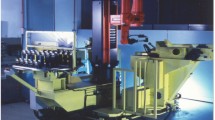Abstract
The field of Robotics is one of the most fascinating areas of research in the world. Right now, hundreds of universities, corporations, and governments are spending billions researching and developing intelligent robotic systems for use in automation, military, medicine, electronics, food and beverage, service and a host of other industries. There is no doubt that robotic systems will play a major role in shaping the future of the world and as research and industry merge, progress in robotics technology will advance several times beyond the current level. This progress will be driven by a need to not only make life easier for consumers, but also to improve communities and even nations as a whole. The market for wireless robots and robotic systems far exceeds the current utilization and as technology advances, the use of robots will be incorporated primarily or indirectly in almost all fields. Of course the most interesting application is use of mobile and communicative robotic systems in everyday life. The possibilities are limited only by human creativity and intellect—the driving force that can turn this industry into the forerunner for an autonomous robot assisted future. Two of the most important areas for furthering the wide scale adaption of robotics are “autonomous mobility” and “wireless communications”. The field of endeavor by which robotic systems communicate wirelessly is known as Wireless Robotics. Advances in the field of Wireless Robotics are necessary to further the growth of robotic systems and their use in everyday life. Research and development in this field needs to progress more rapidly in order to see faster adoption of robots in everyday life. One way to stimulate this growth is by leveraging expertise on a global scale. But for people to cooperate in a global environment and be able to design systems without running into compatibility issues, standards are necessary. In this paper, we shall provide a brief background on the origin of robots and our fascination with them, discuss various use cases in current life, and provide the motivation for standardization in the field of Wireless Robotics.
Similar content being viewed by others
References
Gutenberg.org . R.U.R. by Karel Čapek—Project Gutenberg. http://www.gutenberg.org/ebooks/13083.
Gopalakrishna, S. The story of Vimanas: India’s tradition of flying machines. UFO EVIDENCE. http://www.ufoevidence.org/documents/doc107.htm.
Needham, J. (1991). Science and civilisation in China: Volume 2, history of scientific thought. Cambridge University Press. ISBN 0521058007.
Kumar, V. (2002). Vastushastra. New Dawn/Sterling. p. 5. ISBN 9788120721999.
Guizzo, E. World Robot population reaches 8.6 million. http://www.spectrum.ieee.org/automaton/robotics/industrial-robots/041410-world-robot-population.
List of metropolitan areas by population. http://www.en.wikipedia.org/wiki/List_of_metropolitan_areas_by_population.
World Robotics. (2011). World Robotics 2011 executive summary. http://www.worldrobotics.org/uploads/media/2011_Executive_Summary.pdf.
Ricker, T. (2011). Robo dynamics Luna : the 5-foot tall personal robotic platform. http://www.engadget.com/2011/05/11/robodynamics-luna-the-5-foot-tall-personal-robotic-platform-tha/.
McKinney, L. (2009). Will AI surpass human intelligence by 2020? http://www.dailygalaxy.com/my_weblog/2009/09/a-singular-something-in-sixty-years.html.
Matysczcyk, C. (2009). We’ll be immortal in 20 years, says Kurzweil. http://www.news.cnet.com/8301-17852_3-1035950171.html.
Kurzweil, R. (2005). The sin gularity is near. New York: Viking. ISBN 0-670-03384-7.
Guizzo, E. When my avatar went to work. http://www.spectrum.ieee.org/robotics/industrial-robots/when-my-avatar-went-to-work.
Weiner, E. Could Robots replace humans in mines? http://www.npr.org/templates/story/story.php?storyId=12637032.
Guizzo, E. How google’s self-driving car works. http://www.spectrum.ieee.org/automaton/robotics/artificial-intelligence/how-google-self-driving-car-works.
Hyde, J. This is google’s first self-driving car crash. http://www.jalopnik.com/5828101/thisisgooglesfirstselfdrivingcarcrash.
Author information
Authors and Affiliations
Corresponding author
Rights and permissions
About this article
Cite this article
Pruthi, S. Wireless Robotics: A History, an Overview, and the Need for Standardization. Wireless Pers Commun 64, 597–609 (2012). https://doi.org/10.1007/s11277-012-0603-9
Published:
Issue Date:
DOI: https://doi.org/10.1007/s11277-012-0603-9




